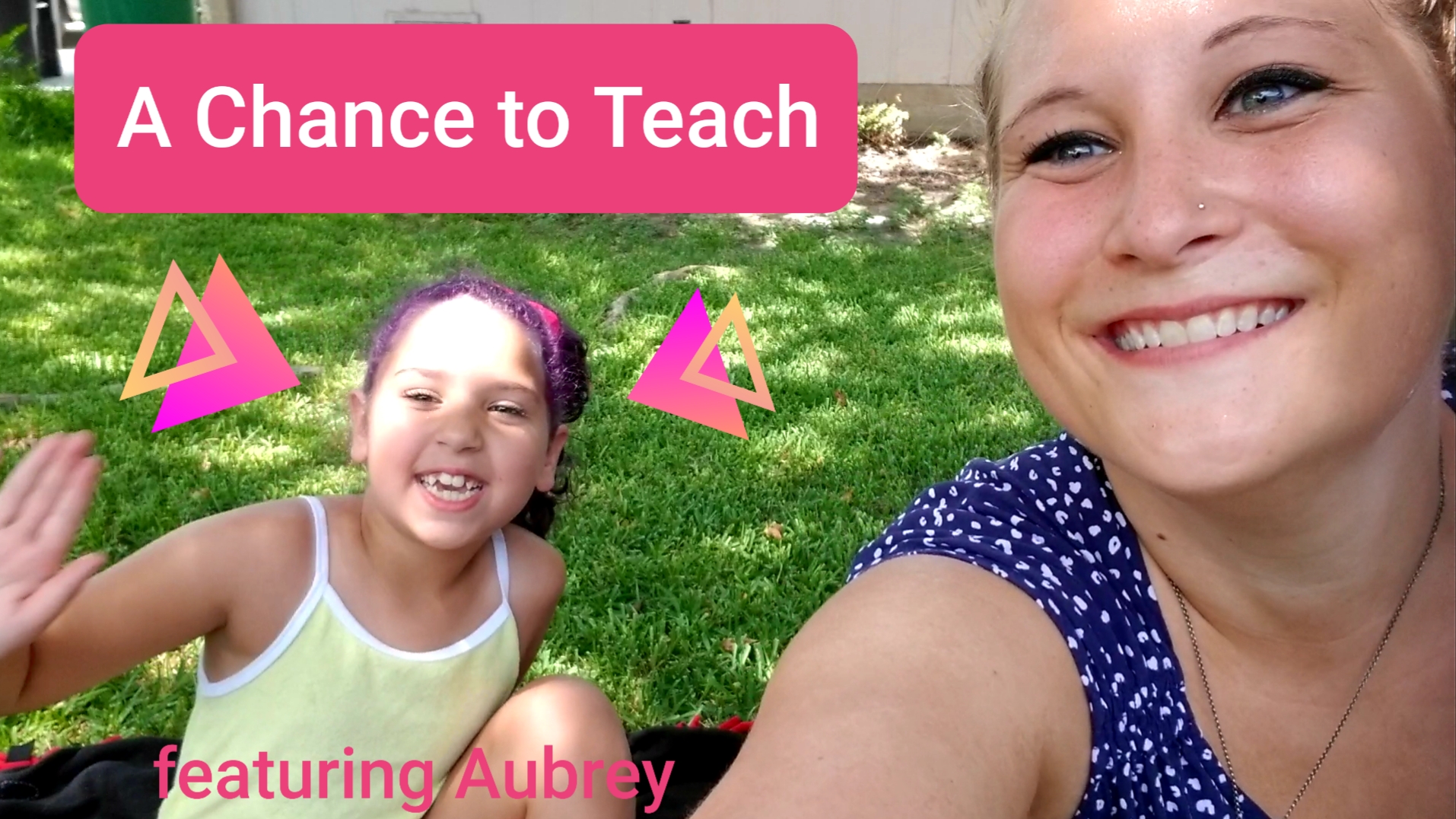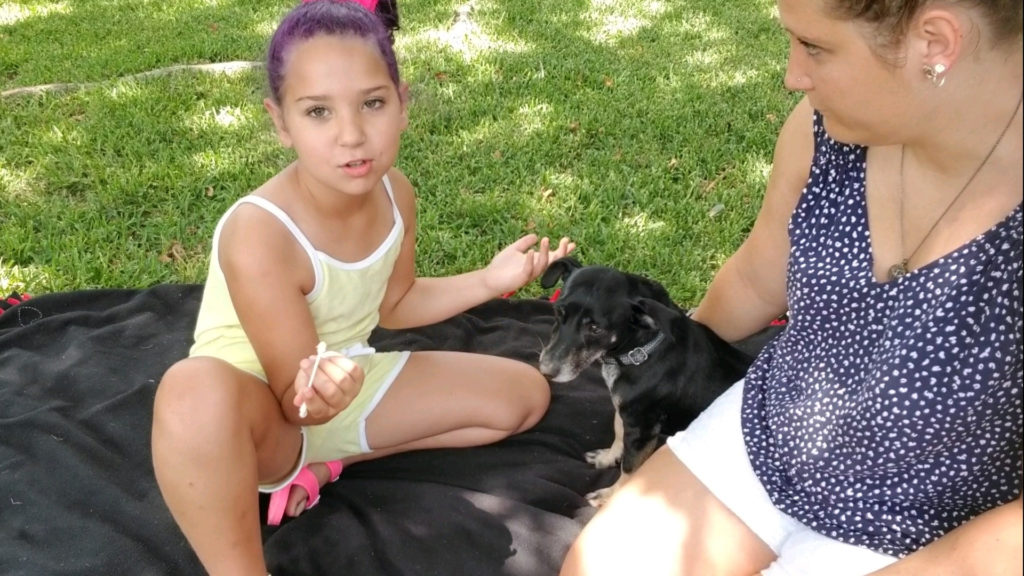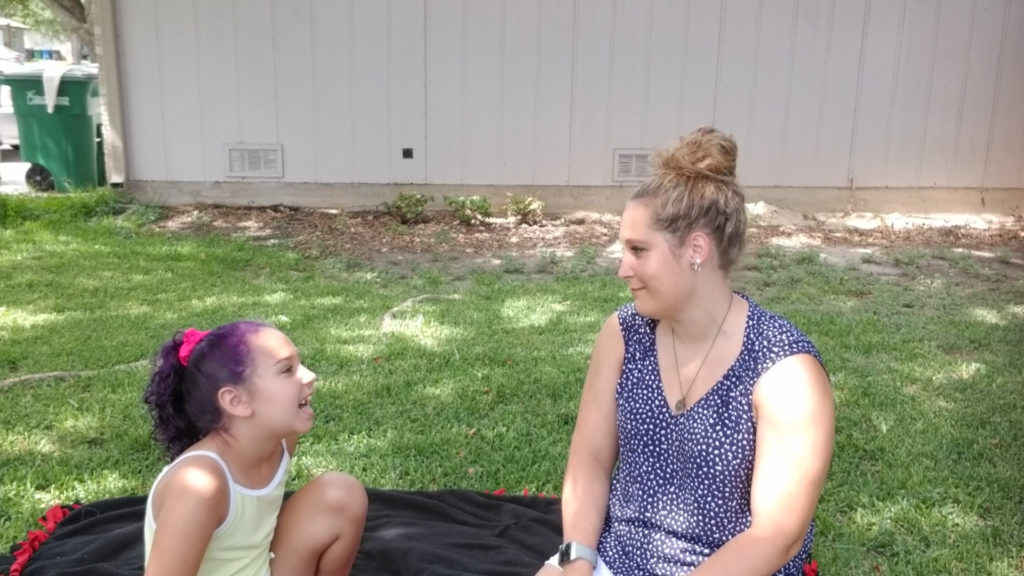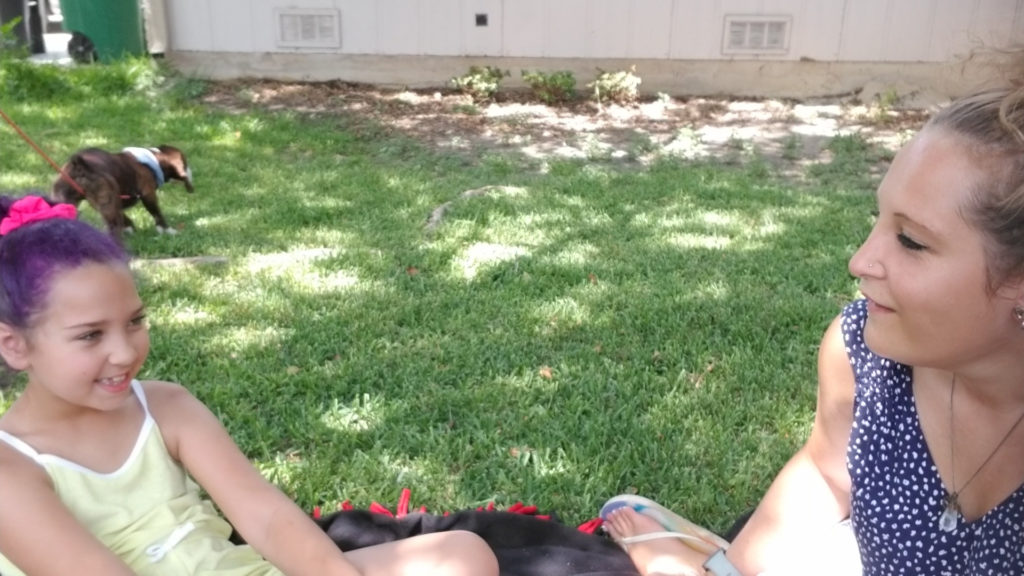
Kids Teaching a Lesson to Adults
Kids who grow up to be teachers usually have some home video, picture, or story in which they were teaching a lesson to their sibling, guardian, pet, or stuffed animal. This is often a moment that adult teachers look back on and say, “Look, some part of me knew from then on that I wanted to be a teacher.” This blog can help you guide your child in teaching their first lesson and possibly inspire a teacher of tomorrow.
For more ideas about summer experiences you can do while learning at home with your kids, visit the main page, Charter a Summer of Learning.
Kids Can Learn by Teaching a Lesson
This blog isn’t just for future teachers! Teaching a lesson helps a child’s development in so many ways. First, kids get practice with presentation, and sometimes research skills, too. Second, they can see from the perspective of an adult or a teacher in their life, which encourages empathy. Third, they have opportunity to teach a friend or family member something, which increases their own confidence and builds knowledge for everyone else. Fourth, this activity has many opportunities for extensions, such as recording themselves (or having a guardian record them) and—depending on their age and preference—practicing editing skills, seeing what they look like when presenting, and experiencing the creative side of social media in a safe environment.
Your child may request specific supplies depending on what they choose to teach. Here are some things you may want to have nearby: poster board, printer paper, markers, a camera, and a computer.
Teach What You Know—Activity for Ages 10 and Under
Younger children should be encouraged to teach to an adult they know well and on a topic they are already familiar with and enjoy—although if they want to learn about new topics, go ahead and let them branch out! Many young kids enjoy watching social media. Presenting this activity as the opportunity to “be a YouTuber for a day” may be more enjoyable and less intimidating than “giving a presentation.”
My six-year-old niece, Aubrey, helped me make a video of this activity. I started by asking her if she wanted to teach me something or “be a YouTuber for a day.”
https://youtu.be/SP6_f6QDiCo
Aubrey was excited, and decided she wanted to teach me how to clean a dog’s ears—a topic she is familiar with. Because she is so young, she became focused on the task rather than teaching the topic, so I asked questions to encourage her to explain what she was doing and why.
Though she needed extra encouragement and direction, Aubrey successfully taught me how to clean a dog’s ears very thoroughly and we both enjoyed the activity. I discussed with Aubrey about posting to social media and how people always have different opinions. We also talked about how it felt to “be a YouYuber” and a teacher. Are you ready to try letting your child teach you a lesson?
Presentation Skills—Activity for Ages 10–14 Years Old
For children in middle school, the activity can be elaborated. Children at this level can create a graphic or presentation for teaching a lesson to a sibling or parent. Encourage them to make a poster, small graphic, powerpoint, Prezi, or other visual to use during their presentation.
Children at this age might still be excited to pretend or actually make a video for social media, but some might not. If your child is not interested in teaching something from the lens of social media or as a teacher, try encouraging them to be persuasive. Maybe this is the chance they’ve been looking for to research and present why owning a dog will help them to live longer! (Animal lovers may also enjoy this activity about fostering dogs and cats.)
When your child presents their activity to you, try to ask a lot of questions to further encourage their confidence and further exploration of the topic. Here is a video on creating persuasive speeches and presentations that could aid your student in making a persuasive presentation.
Research Skills and Persuasion—Activity for Ages 14 and Up
For teens preparing to teach a lesson, encourage them to research ahead of time, be persuasive, and pick a lesson with more depth. Encourage your teen to create a presentation or graphic with a purpose—i.e., to educate, to persuade, etc. In this technological age, students should be encouraged if possible to make a digital presentation and record and edit a video of themselves teaching a lesson.
Give teens some freedom to create; let them work and see what they come up with. Ask them about the choices they made. Get them talking about how they would use this skill in the future—this helps teen to identify possible careers or collegiate routes.
This is also an opportunity to remind your teen about what qualifies as a reputable source, when to use different types of sources, how to research, and the downfalls of plagiarism. Here is an article on credible sources from the University of Maryland.
Extend the Learning: Record a Video, Edit, and Share
In addition to teaching a lesson, children and teens can learn even more by recording their lesson on video and editing it. Then, they can ask a parent to upload their lesson video to Facebook or YouTube. This is as an opportunity to safely learn about social media and its values and takeaways. However, Be prepared to talk to your child if someone is negative about what they’ve created.
The experience of editing and sharing lesson videos could encourage children to pursue careers in media, education, videography, photography, editing, or many more associated with the ever-growing technology world.
Some kids may be inspired to make their own YouTube channel. Here is a video on creating a kids’ YouTube channel, made by a child YouTuber, Gracie Gosling:
Charter Moms Chats
Watch Mary Luehring’s interview with Inga Cotton on Charter Moms Chats.
For more ideas about summer experiences you can do while learning at home with your kids, visit the main page, Charter a Summer of Learning. Enjoy more activities recommended by SST teachers in our post about Making Faces. Read about the School of Science and Technology in our enrollment guide.
About the Author
Mary Luehring (née Lutka) is a sixth, seventh, and eighth grade Social Studies teacher at the School of Science and Technology (SST). In addition, she is the district Social Studies Department Head, a newlywed, and she received the Teacher of the Year award for her district in 2016. She has wanted to be a teacher since she was in the third grade, and is passionate about education and the chance for future teachers to be passionate as well.
SST has allowed Ms. Luehring many opportunities to teach kids about social studies, while also building their character development with confidence, creativity, and motivation. At SST, she is exposed daily to how to become a stronger teacher, including using innovative technology as the world advances in the digital age.
Ms. Luehring is enthusiastic about being part of the SST educational team because it has allowed her to grow as a teacher, leader, mentor, and communicator. SST has made Mrs. Luehring’s students successful by allowing her to dream big and encourage them to pursue high expectations and goals of success.





One Comment